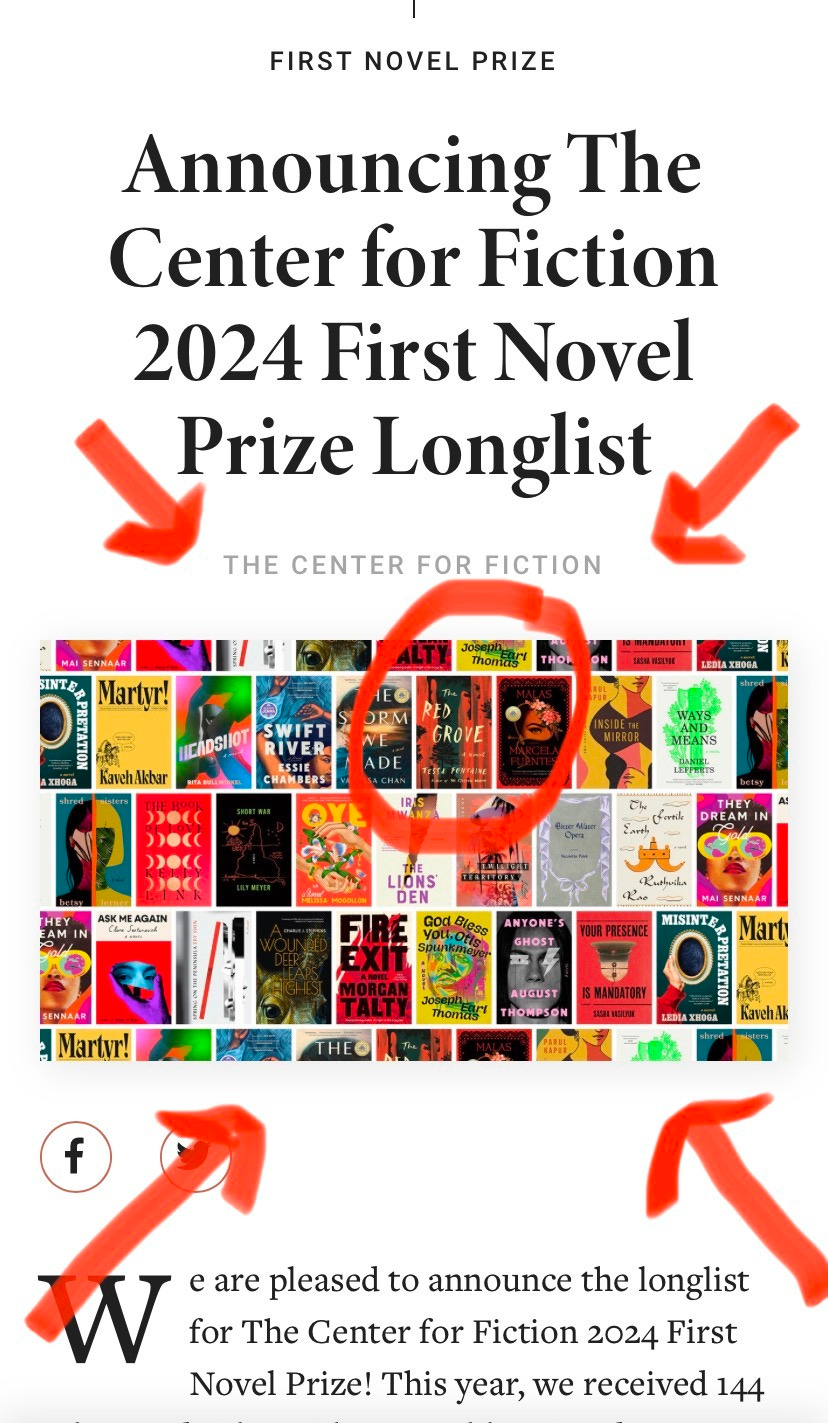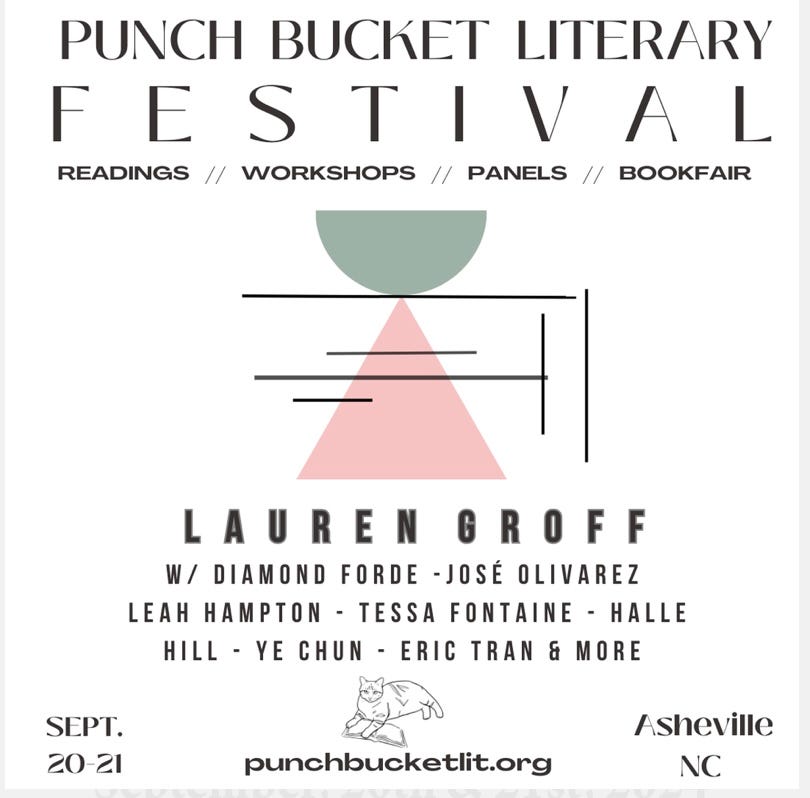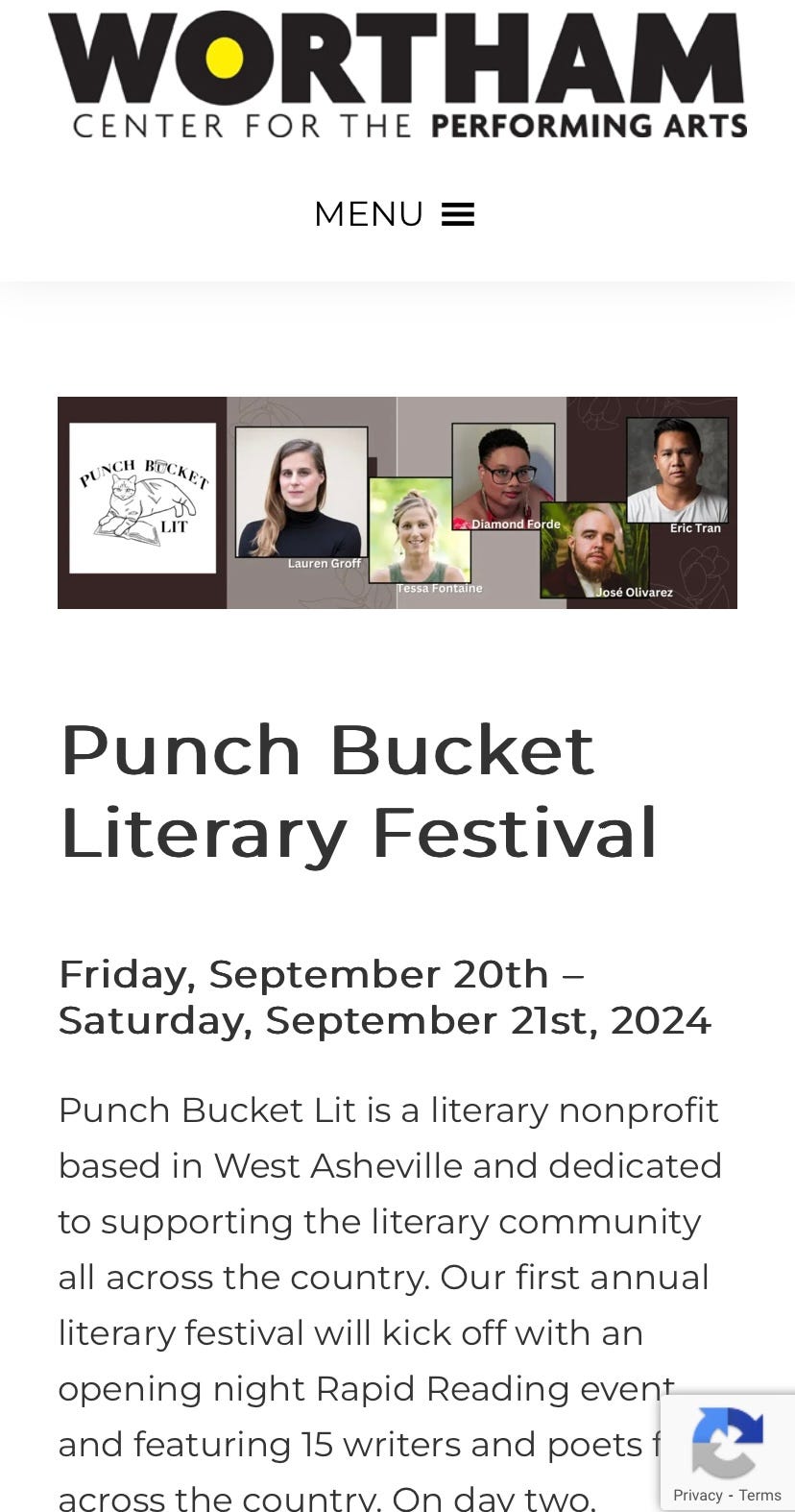Flashlight #16: A New Approach to Book Drafting
Apple pickin', Fall Writing Camp, a new-to-me approach to drafting a novel, and the impending meeting between me and my literary hero, help, what should I wear?!
Hello! It is 90 degrees in Asheville today, but I am pretending it’s fall. We went apple picking last weekend (fall AF, see cute pics below) and Leela has started at a new daycare (the first day of school be a national holiday where parents all get a free massage), and I’m finally home from book touring and summer travels and settling back in to a rhythm. Happy fall!*
*(wipes dripping sweat from brow)

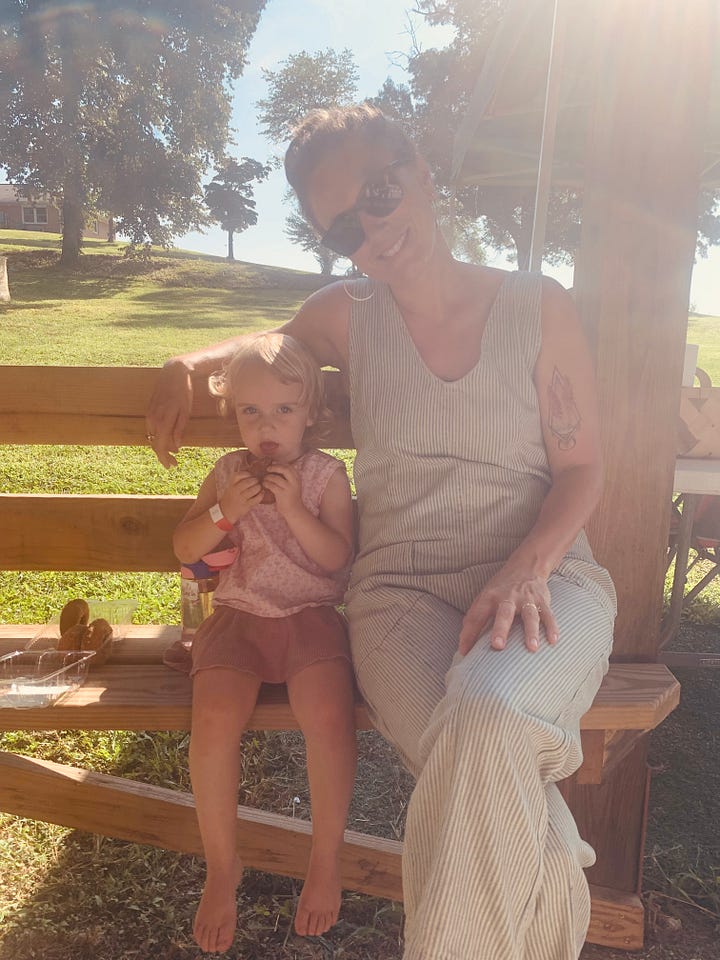
Here’s a tip: go apple picking at the beginning of the season. I’ve always waited until later, when it’s sweater weather (or jacket weather) and it feels more like fall. But the yellowjackets can be alarming in their quantity and ferocity at orchards, and some of the apple varietals are meh. But listen: what’s ready right now are Honeycrisps, which are inarguably the most delicious of all apples. We picked a peck. (Been waiting my whole life to say that). We made this amazingly good cake, first published in the New York Times in 1973. It’s insane.
One piece of cool book news before I go into other things: I recently learned that The Red Grove is longlisted for the Center for Fiction’s First Novel Prize! I’m absolutely thrilled!
Will let you know if/when I win the One Hundred Million Dollar cash prize.
Fall Writing Camp
This summer, my writing pal Annie Hartnett organized a book tour for our writing group, The Finishers, since three out of four of us had books out back to back (shoutout to Margo’s Got Money Troubles, The Garden, and The Red Grove, and please keep your eyes peeled for Annie’s book out next year, The Road To Tender Hearts, which is absolutely amazing).
We had the time of our lives flitting between NE bookstores, and started dreaming of how we might let the magic spread to other writers. Thus, the dream of writing camp was born.
This five-day, four-night generative retreat in gorgeous New Hampshire will offer a mix of craft lectures, writing prompts, one-on-one faculty chats, one-on-one agent meetings (they’ll read your query letter and first five pages of your manuscript), business-of-writing lunch talks, and restorative writing time. Additionally, we want the good writing vibes to continue, so you’ll get three free months in the Accountability Workshops after the retreat.
There’s a certain kind of artistic magic that arises when writers join in community to think, talk, play, and cheer one another on. It’s a magic we’ve all found with each other - it has changed all our writing lives in profound ways - and now we want to spread the fun to you.
Writing Camp will take place at Purity Springs Resort in Madison, New Hampshire from Thursday, November 7 through Monday, November 11th (Veteran’s Day). That’s five days, four nights. Applications are open, spots are limited to 30 max, and we only have a handful left. Your registration fee includes lodging in a private room, meals, two one-on-one meetings with faculty, an agent one-on-one, craft talks and writing prompts, group activities, plenty of time to write, three months free membership in the Accountability Workshops, and campfires every night.
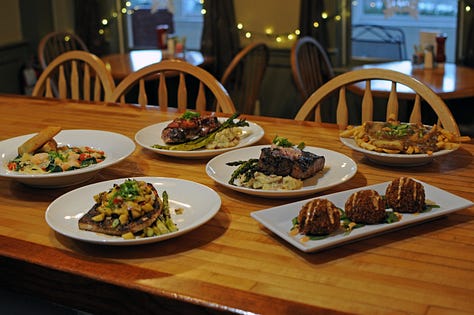
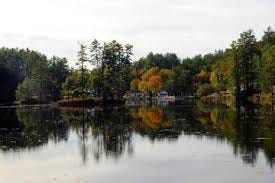
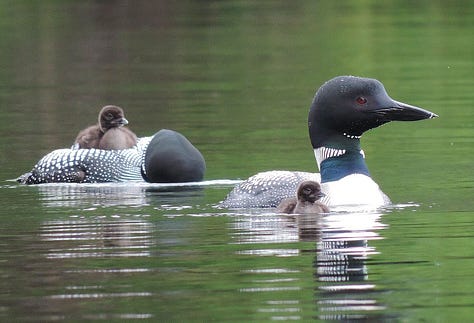

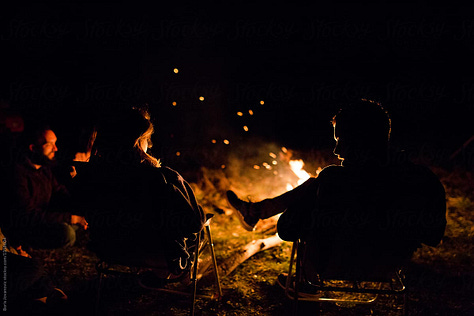

A New Approach for Drafting a Book
Today I am thinking about approaches to drafting a novel. Ok it’s not just today; I think about this all the time. But I’m thinking about it newly today because I’m finally (finally!) putting my toes back into my new book draft and going about it a little bit differently than I have in the past.
Here’s the quick background. I’m 60k words into my new novel draft. For my previous two books and countless shorter pieces, my approach has always been scattershot. I do not write chronologically, I do not write a linear story. I write bits and pieces, thinking about things here and there as I go. In general, I stand behind this approach if this is also your natural approach. Some of our brains just look like confetti inside!
However, while writing THE RED GROVE, I think I made the process of creating a cohesive draft much more difficult because I stuck with the scattershot method for too long. I let the wildness of early exploration carry over into the whole-manuscript draft such that I was still jumping around all the time, even while trying to create a full draft. What I ended up with in early drafts was a collection of interesting scenes and descriptions of trees that lacked causality.
One thing didn’t necessarily lead to the other.
I mean sometimes they did. Some things linked up. But a lot of things didn’t, and it meant that the story didn’t have much tension or propulsion, because actions didn’t have consequences. We love when actions have consequences! Especially when they are bad!
So here’s where I’m at with this new novel: I spent the first 60k words in my normal scattershot exploratory phase. Some of it is causally linked, some of it is not. All the scenes and chapters appear as about 35 separate files in Scrivener, and they do not form a cohesive draft or partial draft. They are like 35 ingredients, and some of them definitely can work together to make a good cake, and some of them may just be pineapple. Pineapple is cool! But it doesn’t always go in cake. We’ll have to see what kind of cake this really is.
And here’s what I’m doing differently starting now. I opened up a blank word document (I haven’t written a book-length anything in one of those puppies in years) and began typing. Ok sometimes I copied and pasted. But sometimes I just started tying again, while looking at what I’ve already generated. I’m going to try to stay within this word document, moving chronologically forward. I still have my scattershot Scrivener file that I’ll be referring to, but my goal here is to build this next phase of a more coherent draft by using a tool that, by its nature, makes it hard to jump around. I’m filling in gaps between scattershot pieces to connect them (so mature, thank you!) and seeing how a character’s choices directly and indirectly impact what comes right after, and then after that.
Let me admit that this is not revolutionary. Ann Patchett writes about it brilliantly in her excellent craft essay “The Getaway Car.” Lauren Groff talks about writing draft after draft by hand, from the beginning to end.
So. I will report back.
***(Let it be noted that I’m writing this after having had too much coffee and feeling overly optimistic about the draft and also after having only been trying this approach for a few days so far. But I’ve been thinking about it for a while.)
Punch Bucket Literary Festival
Oh and let me take this moment, since we’re talking about Lauren Groff, my favorite living writer, to totally not freak out while telling you that I will be in conversation with her for the keynote event at Punch Bucket Lit’s fall festival, coming to Asheville next month, Sept 20-21. There are SO many amazing writers and workshops and readings on the docket, and a kick-ass book fair, and I hope to see many of your lovely faces out there to catch me when I faint off the stage.
So here is my big question:
How do you not faint off the stage when you meet your literary hero?
And not only not faint, ask coherent, intelligent questions?
What should I wear to be both serious and hip and sexy, but in a writer/librarian kind of way? What would make you, if you were L.G., book a tandem vacation for us?
Thank you in advance for your help.
(Did I once take a selfie with my arm around a cardboard cutout of LG at the Miami Book Fair? Yes I did. But if you think I’m including it here, you’re out of your mind.)
(Ok, I would include it, but I deleted it a couple years back because I was too embarrassed.)
As a reminder, you are getting this because either you subscribed (thanks!), are a friend (hi!), or are writing-connected (howdy, how’re the words coming?). Please feel free to unsubscribe anytime, no hard feelings. But if you stick around, I think we'll have fun.
Ok, that’s it!
xo
Tessa
PS: If you know anyone who might like to sign up for this free monthly-ish newsletter, please forward this along.




